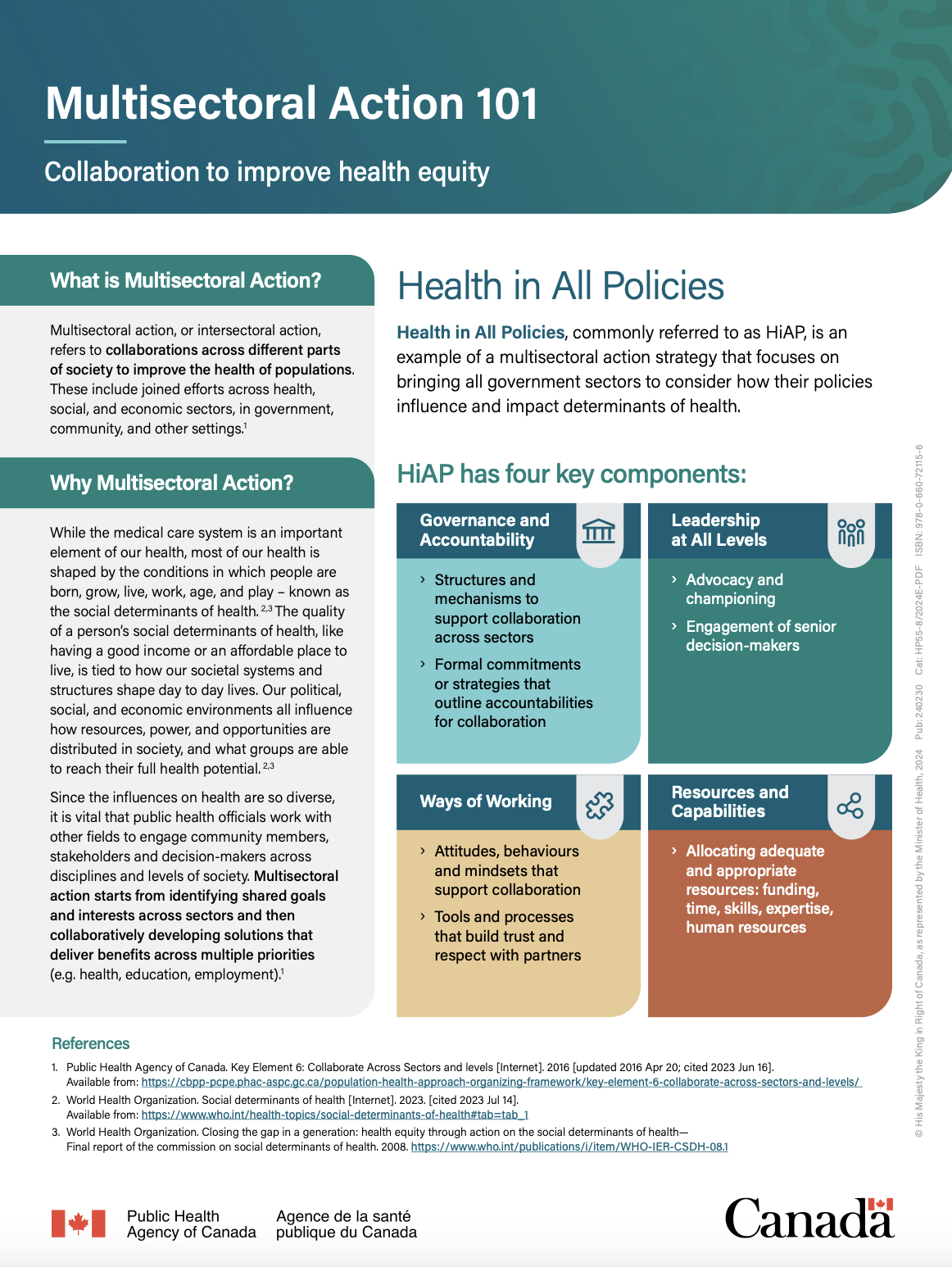Vital Strategies
Principles of Alcohol Taxation
Briefs & Fact Sheets
24 Nov 2025

Multisectoral action, or intersectoral action, refers to collaborations across different parts of society to improve the health of populations. These include joined efforts across health, social, and economic sectors, in government, community, and other settings.1
While the medical care system is an important element of our health, most of our health is shaped by the conditions in which people are born, grow, live, work, age, and play – known as the social determinants of health.2,3 The quality of a person’s social determinants of health, like having a good income or an affordable place to live, is tied to how our societal systems and structures shape day to day lives. Our political, social, and economic environments all influence how resources, power, and opportunities are distributed in society, and what groups are able to reach their full health potential.2,3
Since the influences on health are so diverse, it is vital that public health officials work with other fields to engage community members, stakeholders and decision-makers across disciplines and levels of society. Multisectoral action starts from identifying shared goals and interests across sectors and then collaboratively developing solutions that deliver benefits across multiple priorities (e.g. health, education, employment).1
Health in All Policies, commonly referred to as HiAP, is an example of a multisectoral action strategy that focuses on bringing all government sectors to consider how their policies influence and impact determinants of health.